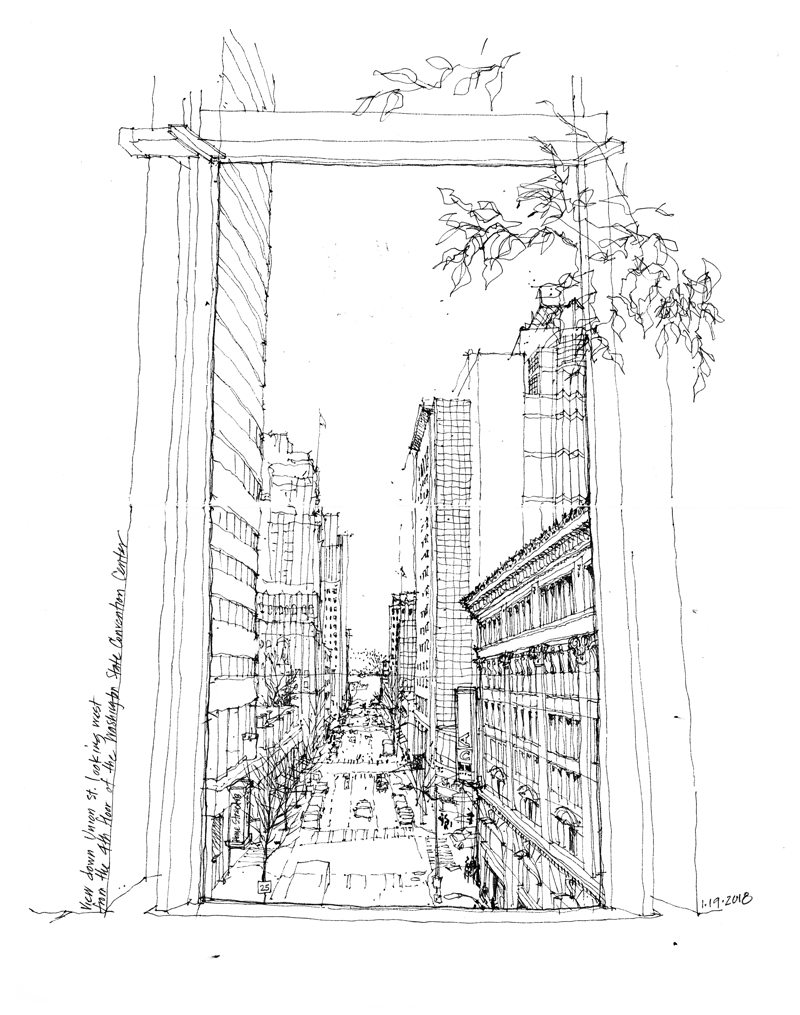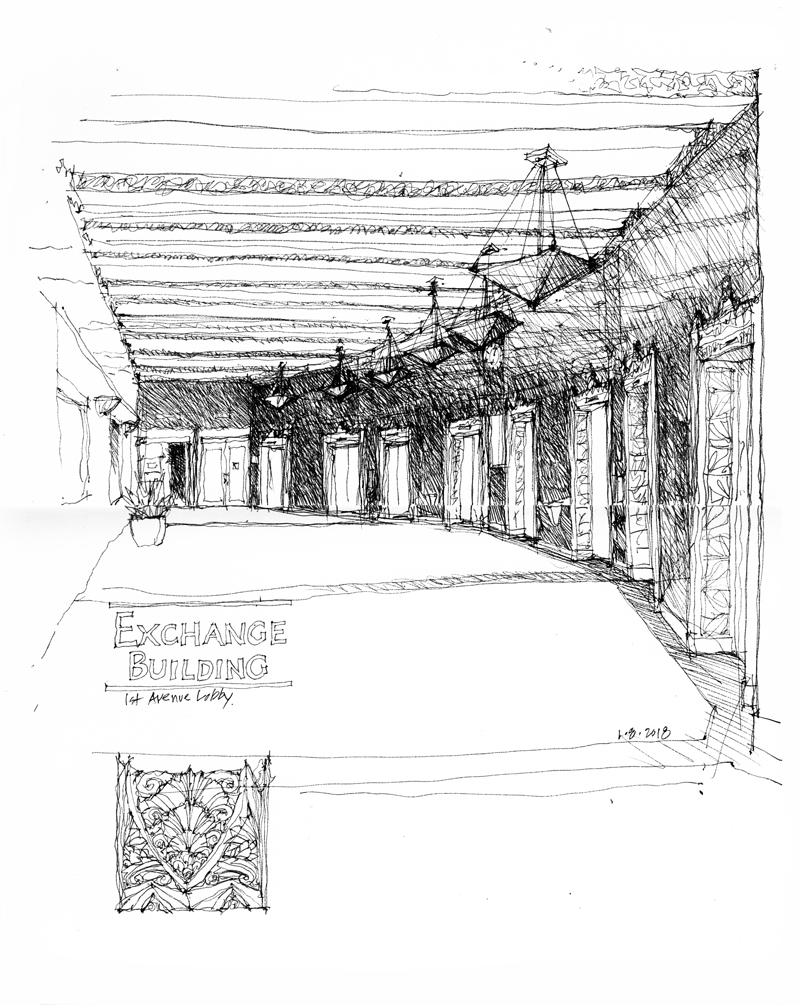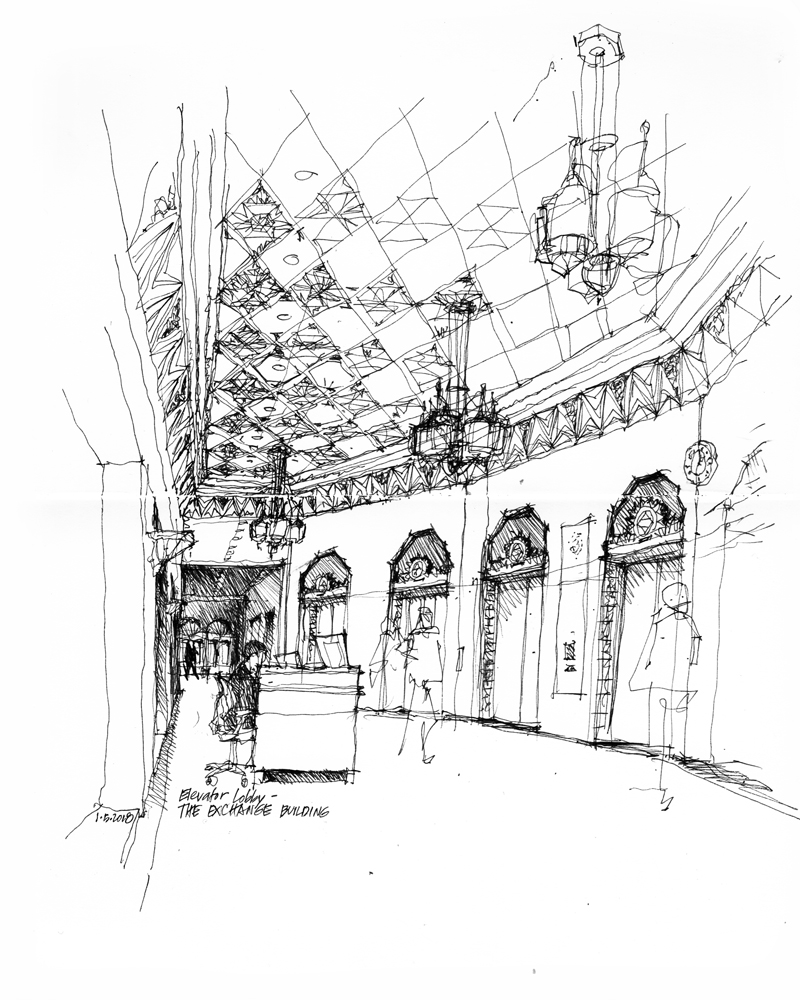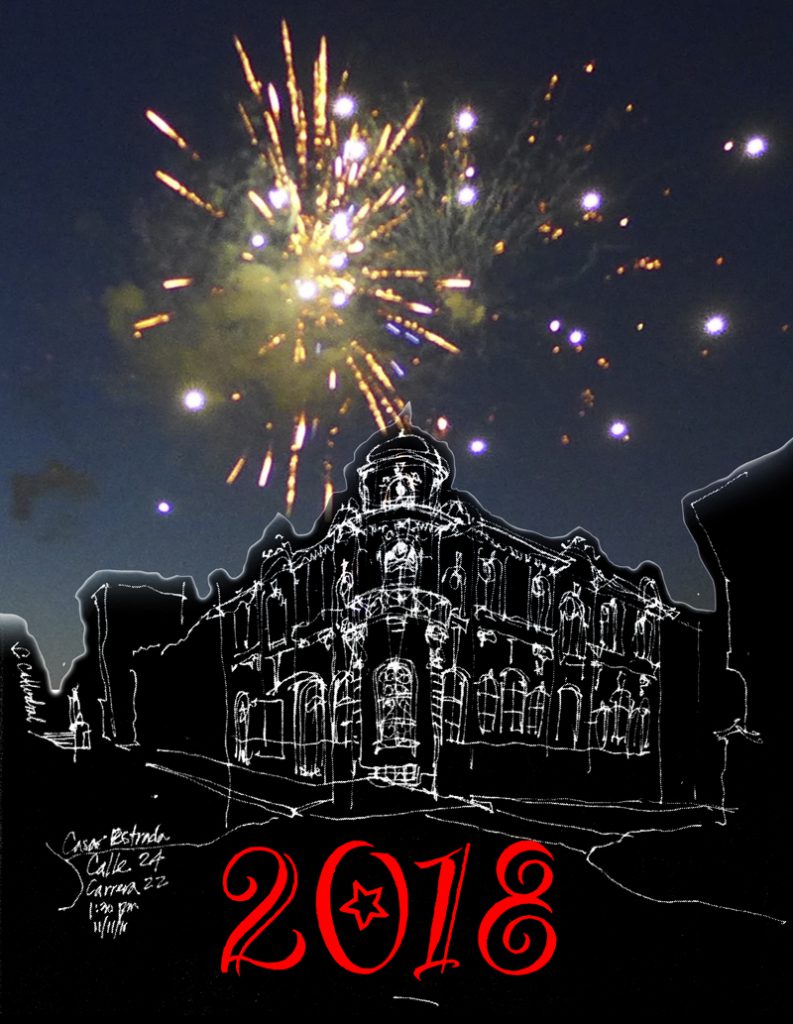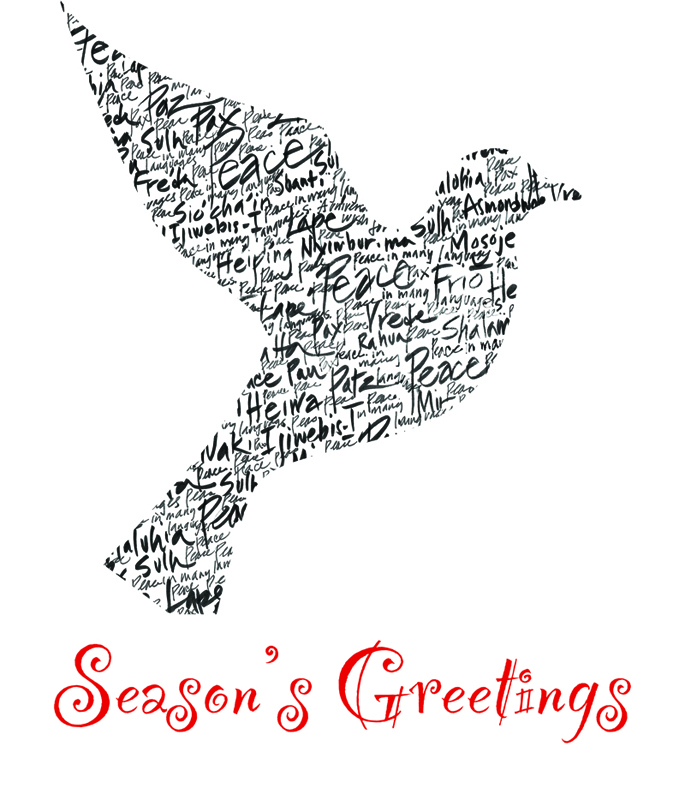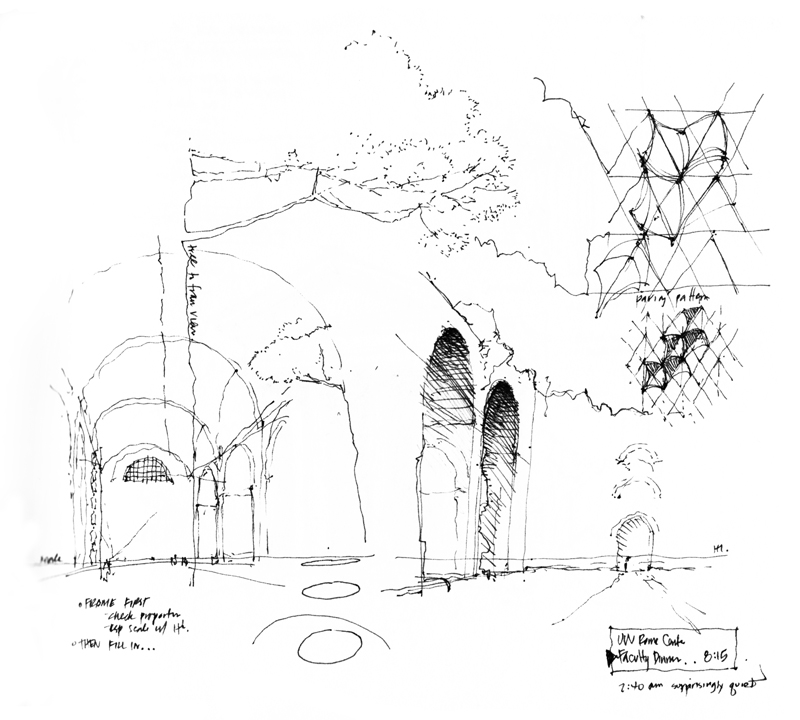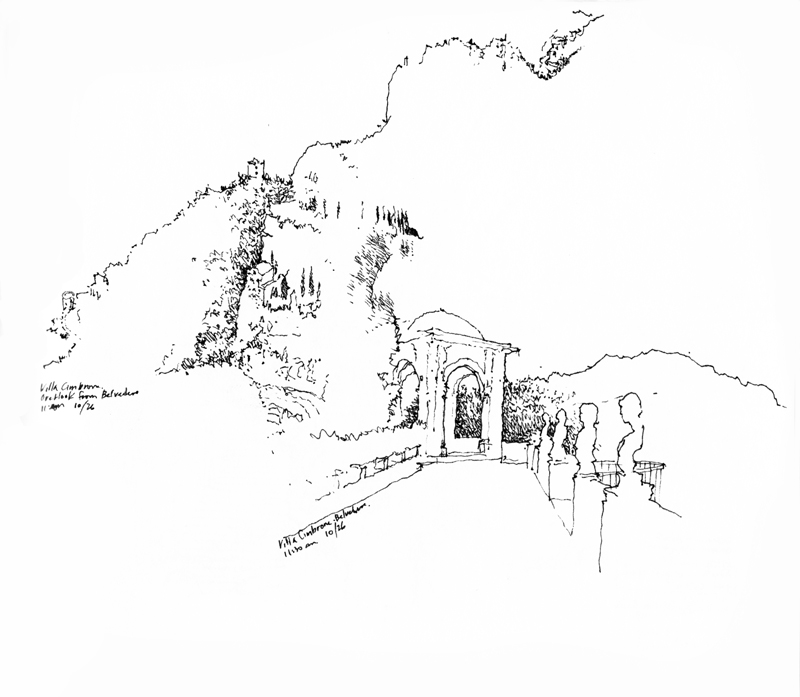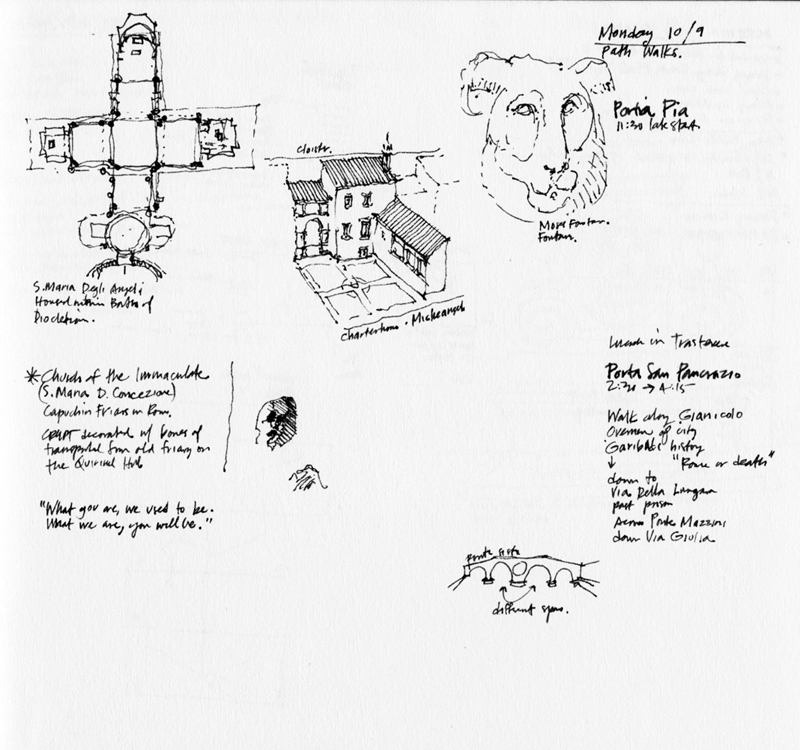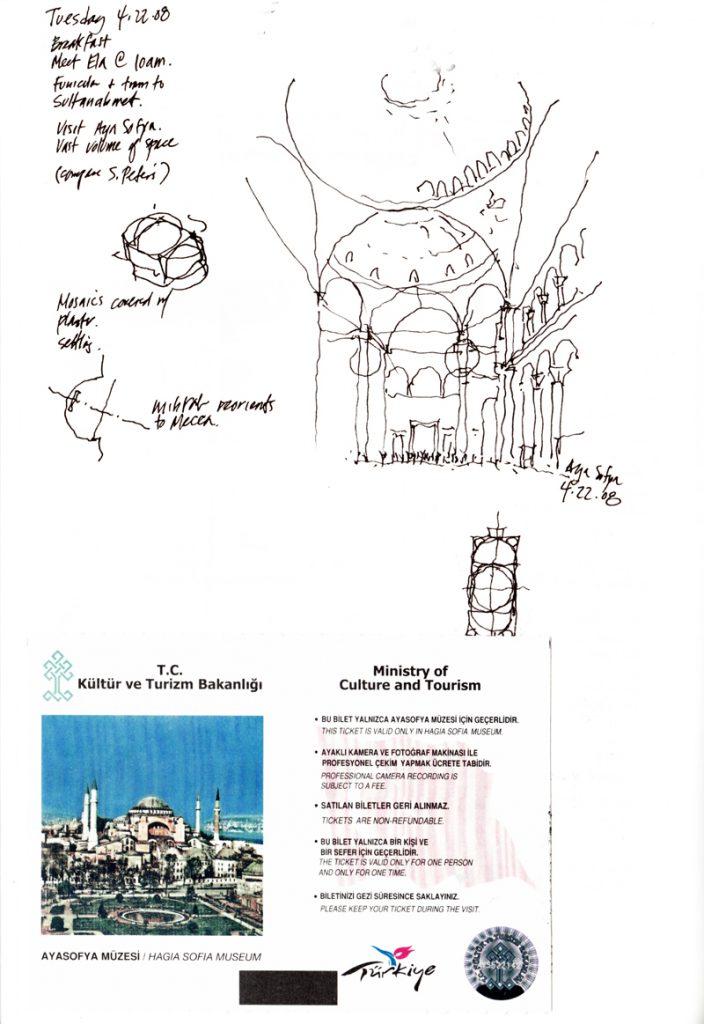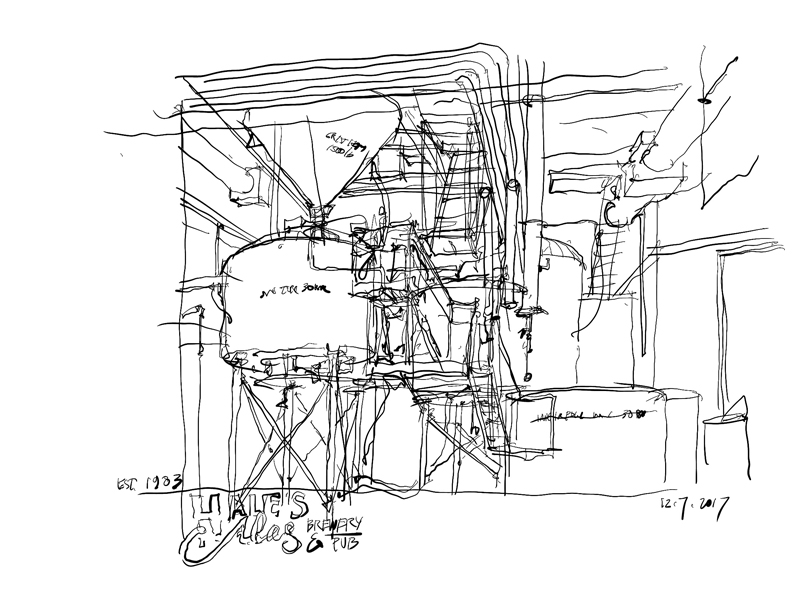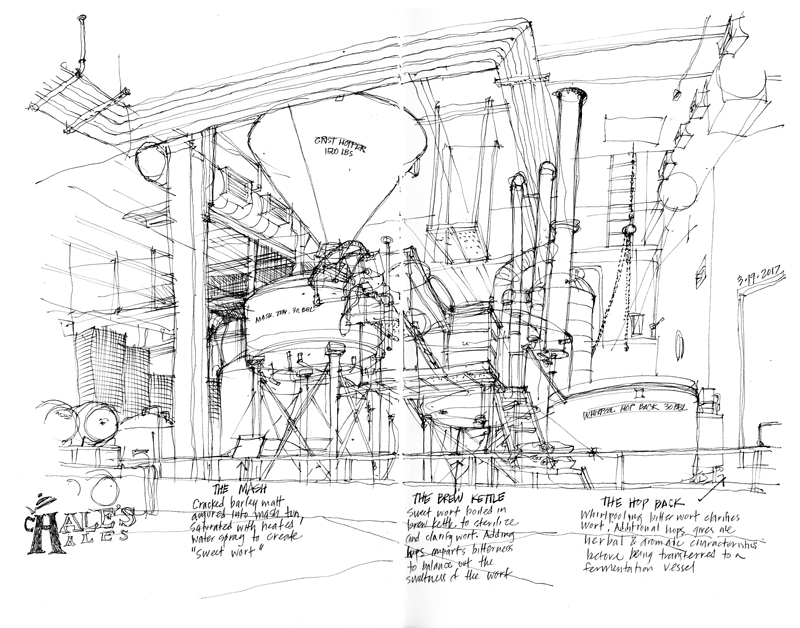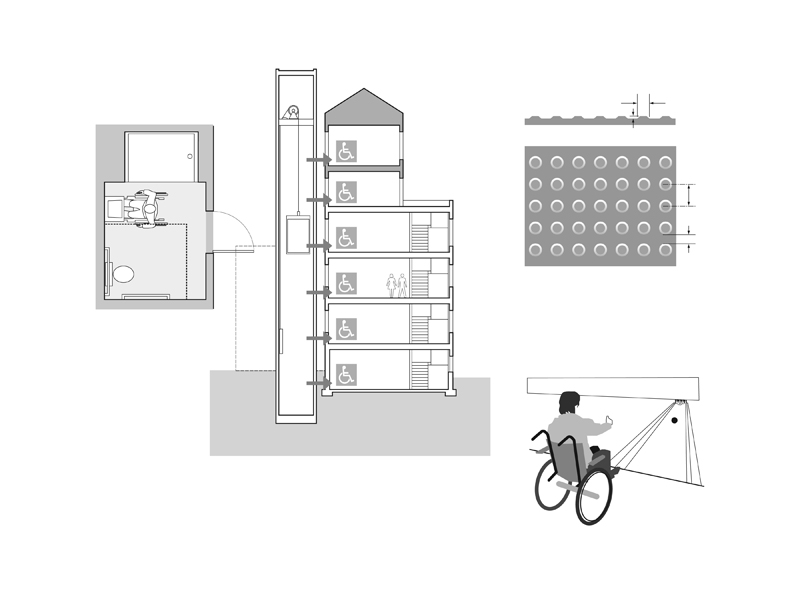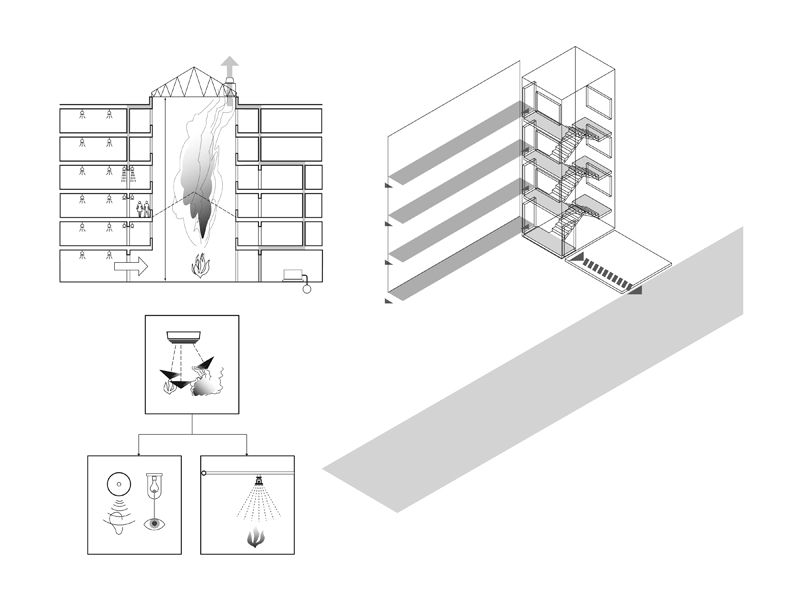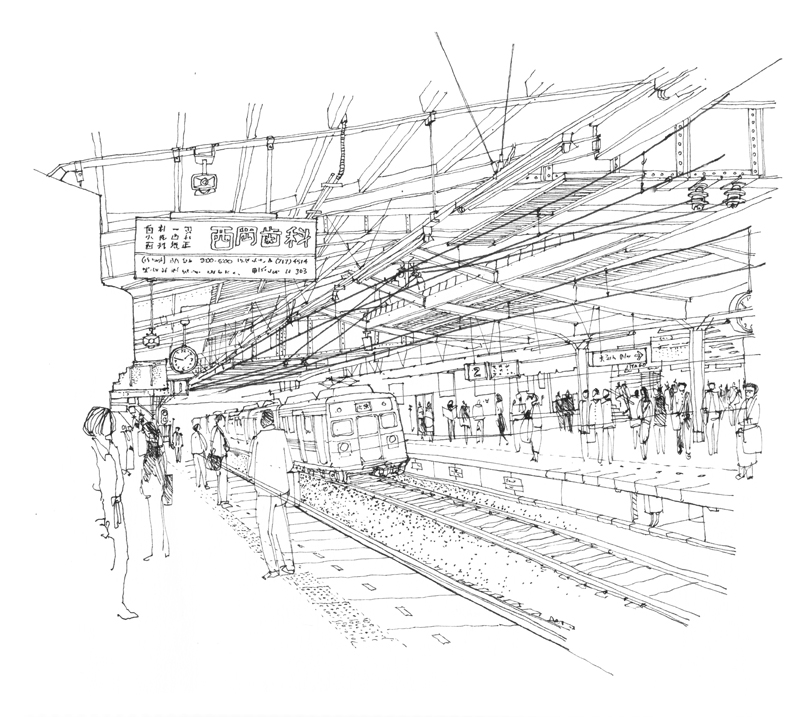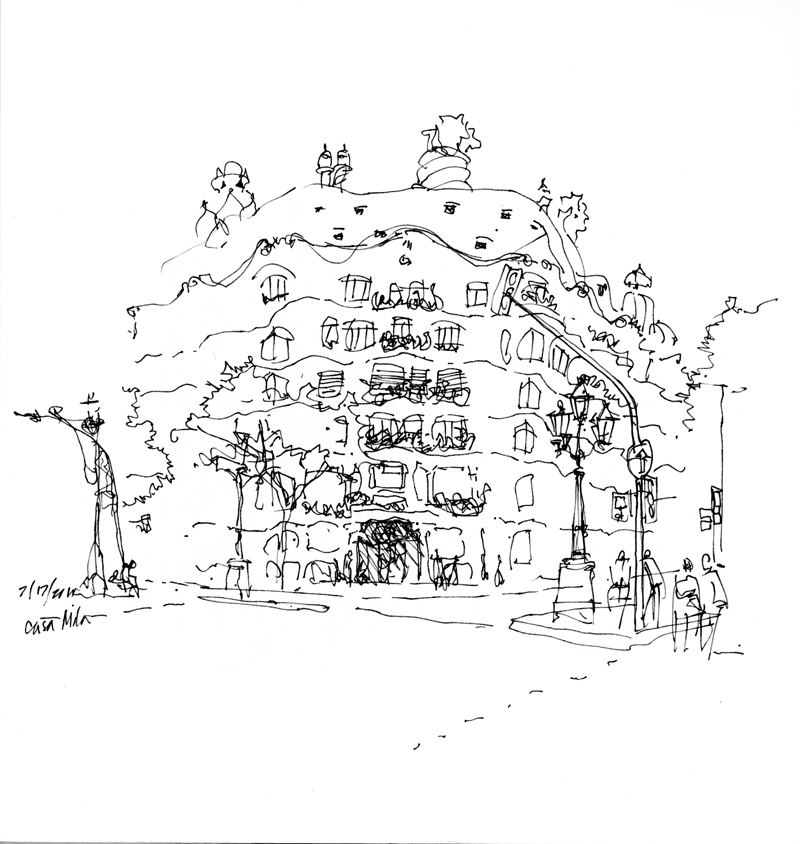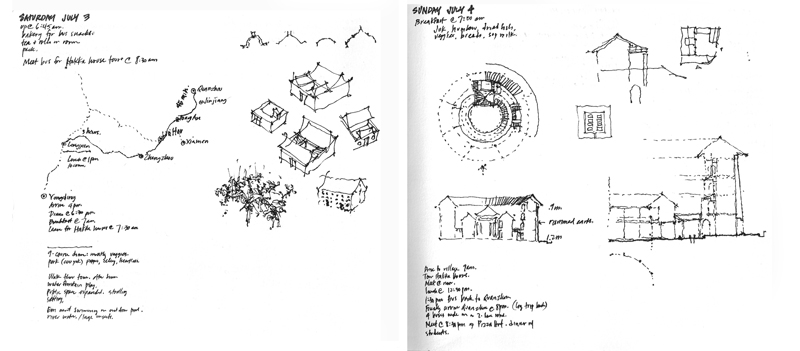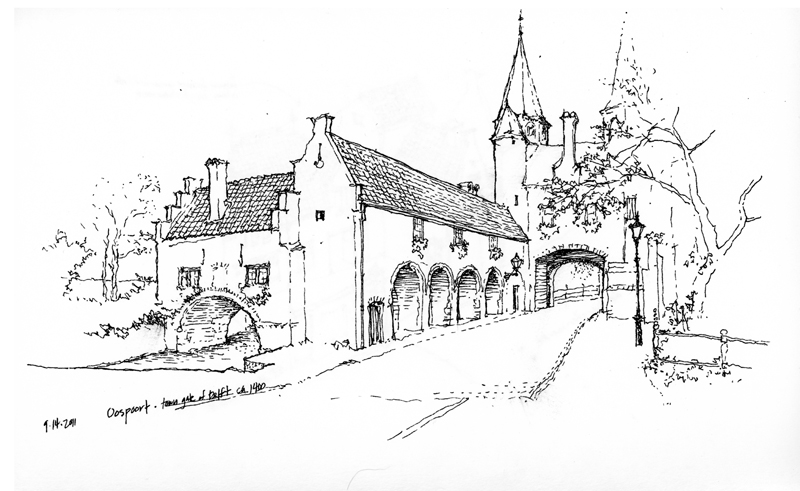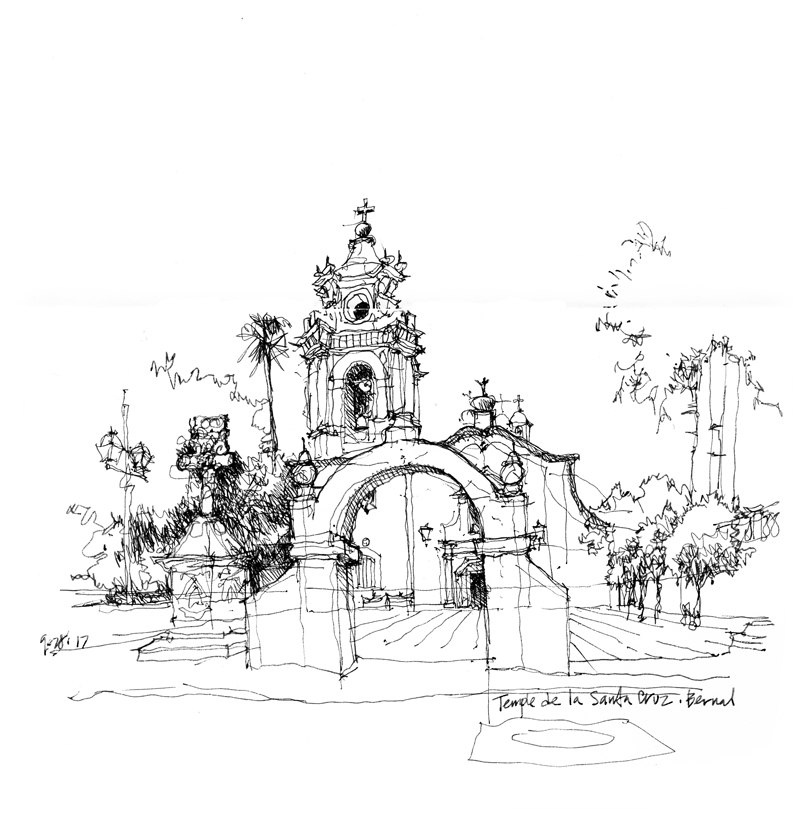The Washington State Convention Center spans the Interstate 5 freeway as well as Pike Street in downtown Seattle. From the 4th floor atrium space, one can look westward down Union Street toward Elliott Bay and West Seattle beyond.
Rainier Tower
On the way home last week after viewing the Andrew Wyeth exhibit at the Seattle Art Museum, I noticed that the low-rise portion of Rainier Square had been demolished, exposing the iconic Rainier Tower to view on all sides. I immediately made a mental note to draw that scene. A few days later, a post by Andika Murandi on the Seattle Urban Sketchers blog reminded me to head downtown to draw Rainier Tower amid the demolition work that is making way for a new 58-story mixed-use highrise. It will be interesting to see how the old and new towers coexist on the same block.
Designed by Minoru Yamasaki in association with NBBJ and the structural engineering firm of Magnusson Klemencic, Rainier Tower is unique for its 11-story high pedestal base that tapers downward, like an inverted pyramid with curving sides. When I first saw Rainier Tower after moving to Seattle in 1980, I remember wondering how the structure could resist toppling over during an earthquake.
One sidenote: I drew this scene with a rollerball pen, which made me miss how sensitive the nib of a fountain pen is to the slightest applications of pressure.
Exchange Building 1st Avenue Lobby
Exchange Building 2nd Avenue Lobby
This is the 2nd Avenue elevator lobby of the Exchange Building, which is situated on Marion Street between 1st and 2nd Avenues in downtown Seattle. John Graham and Associates designed the Art Deco building to house grain, ore, bond, and stock exchanges but the stock market crash of 1929 forced the conversion of its upper floors to offices. Reflecting the building’s original intentions, this lobby incorporates such motifs as sheafs of wheat and bunches of grapes into the Art Deco interior. The exterior of the Exchange Building and both the 1st Avenue and 2nd Avenue lobbies were granted landmark status in 1990 by the Seattle Landmark Preservation Board.
Happy New Year!
Season’s Greetings
A Creative Process
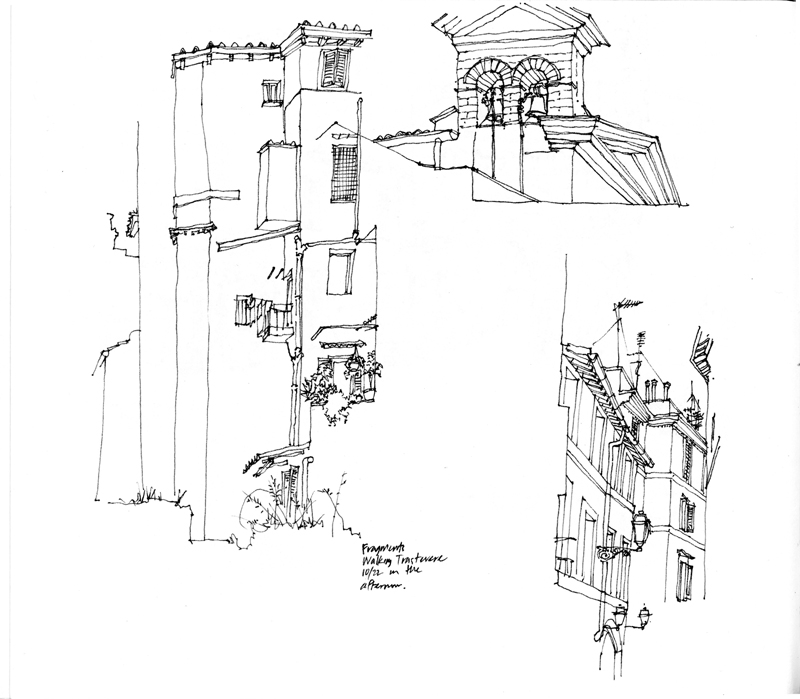 Like sketching, composing each page of a journal or sketchbook is an extemporaneous act. We may have a plan for how to organize the drawings and notes on a page before we begin, but we should also be open to altering the plan as each element is executed.
Like sketching, composing each page of a journal or sketchbook is an extemporaneous act. We may have a plan for how to organize the drawings and notes on a page before we begin, but we should also be open to altering the plan as each element is executed.
For example, we may find that having executed a drawing, its size, shape and proportions may differ, as so often happens, from what we originally intended. By carefully considering the visual shape and weight of the drawing, we can re-balance the page or give it a more dynamic quality with the placement of the next graphic element, whether that element is graphic or verbal in nature. With the addition of further graphic elements, we continue to encounter this opportunity to re-compose the page.
Hale’s Brewery and Pub
Now that the days are getting shorter, colder, and often rainier here in Seattle, I have to find indoor places to sketch. Here is the equipment at Hale’s Brewery and Pub, the longest running independent craft brewery in the Pacific Northwest.
I drew the above view with an Apple Pencil on an iPad using the Procreate app. Of course, one’s choice of medium always influences how one draws, even though the selected subject matter and point of view may remain the same. I find that unlike drawing with a fountain pen, I have less patience for including fine details, for which I would have to zoom in and out, interrupting the flow of the drawing.
For comparison purposes, here is a similar view drawn with a fountain pen in March of this year.
Using Adobe Illustrator
I’m working again with Steve Winkel of the Preview Group, preparing the sixth edition of Building Codes Illustrated: A Guide to Understanding the 2018 International Building Code. When I first began working with Steve in 2000 on the first edition of BCI, I had decided to use Adobe Illustrator to prepare all of the illustrations since I knew that the International Building Code was going to be updated every three years and that many of the graphics would have to be revised on a regular basis.
As I originally posted back in 2013: “I use Illustrator basically as a drafting tool to create the visual ideas I have in mind. The many benefits of vector graphics include: using the Save As capability to try out different options; having precise control over line weights and tonal values; being able to resize drawings easily to fit a page layout; and reusing elements that I had already drawn. Most importantly, when working on a revision, instead of having to completely redo a hand drawing, I can open an existing drawing file and make the necessary changes to create the updated version.”
Here are a few examples.

